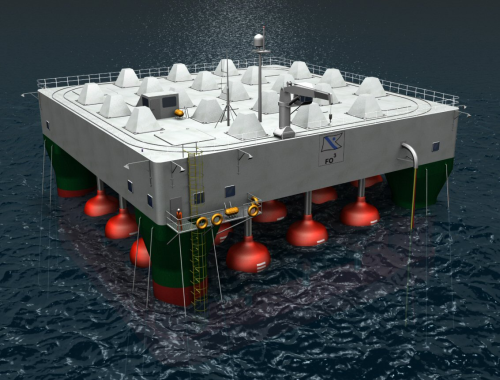
The FO3 Wave Energy Converter is a floating platform with oscillating point absorbers. It is designed to be installed near the shore. Energy is absorbed from the waves as they move the floating absorbers hanging beneath the platform up and down. This motion is used to drive a generator to produce electricity. Both the platform and absorbers could employ composite construction.
The FO3 development team includes:
- Fred Olsen Ltd, of Oslo, Norway, the developer, owner and operator of the wave energy converter;
- Ghent University in Belgium, which is responsible for the mechanical design and testing of the materials and structures, including the floating point absorbers;
- Spiromatic NV in Nazareth, Belgium, which manufactures the components; and
- 3B of Battice, Belgium, a supplier of glass fibre reinforcements for composite applications.
The FO3 Wave Energy Converter is being assisted by the EU-funded SEEWEC (Sustainable Economically Efficient Wave Energy Converter) project. It is also participating in the UK’s Wave Hub project, one of the first large-scale commercial wave farms and planned for launch in early 2010. Fred Olsen is one of several wave energy companies working with the Wave Hub project to evaluate new technologies.
The wave energy converter will have to withstand the challenging ocean environment. For example, the construction of the floating point absorbers must be extremely durable and resilient in order to withstand the slamming impact of the waves. Ghent University scientists recommended filament winding as the preferable production process. 3B’s Advantex™ boron-free E-glass fibre and HiPer-tex™ high-performance glass fibre are being qualified for the application. The 3B glass fibre solutions will also be evaluated for other structural components of the device.
“Wave farms present major material challenges, ranging from harsh weather and corrosive seawater to the difficulties of providing maintenance,” comments Philippe Nellissen, 3B business development manager. “Using the latest materials and an innovative design, our team of development partners has created a structure that we believe will make a major contribution to the success of the marine renewable energy industry and help to leverage this completely new source of clean, renewable energy.”
The FO3 design concept won the 2009 JEC Innovation Award for Environment & Energy.


